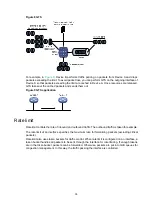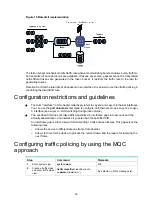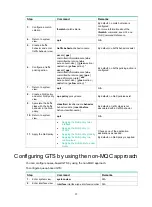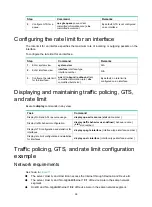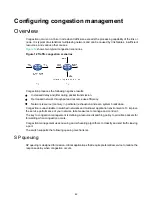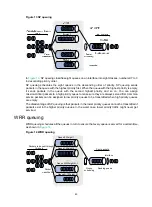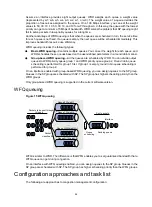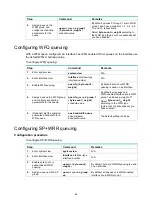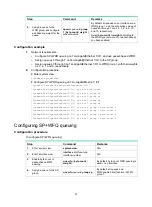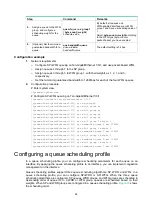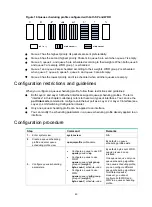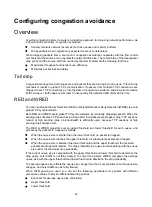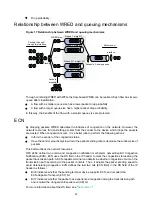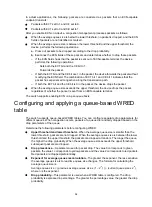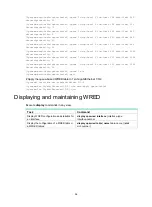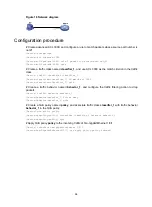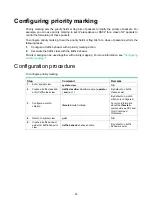
44
Assume an interface provides eight output queues. WRR assigns each queue a weight value
(represented by w7, w6, w5, w4, w3, w2, w1, or w0). The weight value of a queue decides the
proportion of resources assigned to the queue. On a 100 Mbps interface, you can set the weight
values to 50, 30, 10, 10, 50, 30, 10, and 10 for w7 through w0. In this way, the queue with the lowest
priority can get a minimum of 5 Mbps of bandwidth. WRR solves the problem that SP queuing might
fail to serve packets in low-priority queues for a long time.
Another advantage of WRR queuing is that when the queues are scheduled in turn, the service time
for each queue is not fixed. If a queue is empty, the next queue will be scheduled immediately. This
improves bandwidth resource use efficiency.
WRR queuing includes the following types:
•
Basic WRR queuing
—Contains multiple queues. You can set the weight for each queue, and
WRR schedules these queues based on the user-defined parameters in a round robin manner.
•
Group-based WRR queuing
—All the queues are scheduled by WRR. You can divide output
queues to WRR priority queue group 1 and WRR priority queue group 2. Round robin queue
scheduling is performed for group 1 first. If group 1 is empty, round robin queue scheduling is
performed for group 2.
On an interface enabled with group-based WRR queuing, you can assign queues to the SP group.
Queues in the SP group are scheduled with SP. The SP group has higher scheduling priority than the
WRR groups.
Only group-based WRR queuing is supported in the current software version.
WFQ queuing
Figure 15 WFQ queuing
WFQ is similar to WRR. The difference is that WFQ enables you to set guaranteed bandwidth that a
WFQ queue can get during congestion.
On an interface with WFQ queuing enabled, you can assign queues to the SP group. Queues in the
SP group are scheduled with SP. The SP group has higher scheduling priority than the WFQ groups.
Configuration approaches and task list
The following are approaches to congestion management configuration:
Queue 0 Weight 1
……
Queue 1 Weight 2
Queue N-2 Weight N-1
Queue N-1 Weight N
Packets to be sent through
this port
Sent packets
Interface
Queue
scheduling
Sending queue
Packet
classification
Summary of Contents for FlexFabric 5940 Series
Page 23: ...17 Figure 3 QoS processing flow ...
Page 84: ...78 Figure 26 MPLS label structure ...
Page 91: ...85 Switch burst mode enable ...






